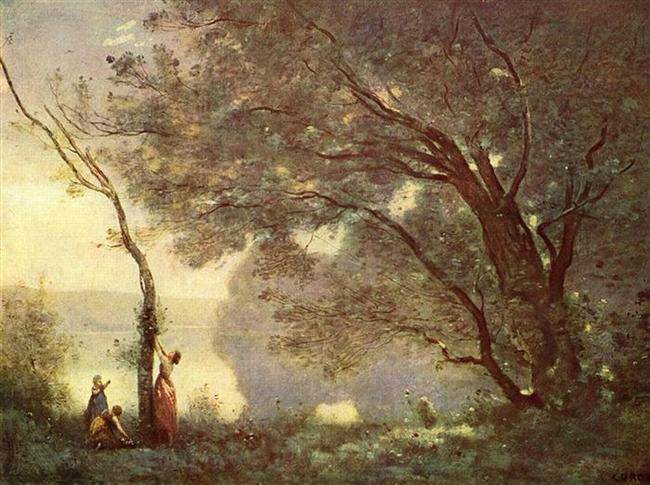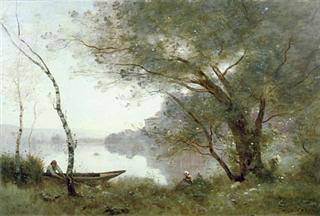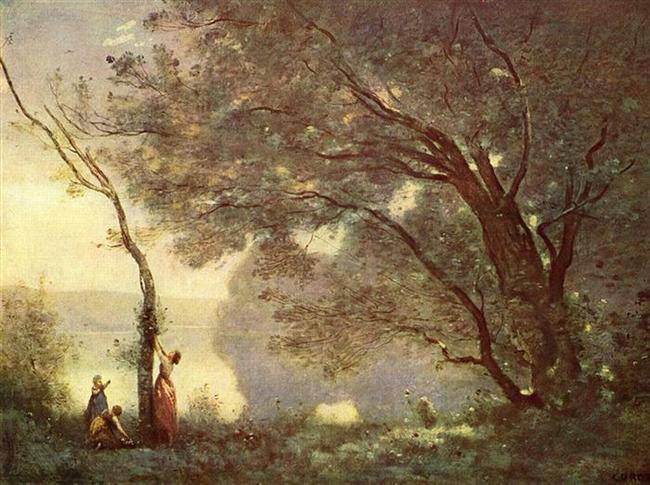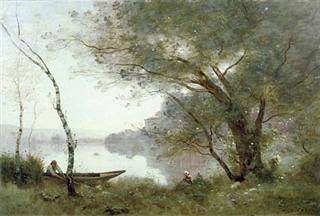Jean-Baptiste-Camille Corot · Souvenir de Mortefontaine (Recuerdo de Mortefontaine)

Jean-Baptiste-Camille Corot (Francia, 1796-1875), 1864. Óleo sobre lienzo, 65.5 cm × 89 cm. París, Louvre
“Solo hay un maestro: Corot. Los demás no somos nada comparados con él. Nada”
Claude Monet
Jean-Baptiste-Camille Corot es uno de los grandes paisajistas del siglo XIX y, junto con Jean-François Millet, el más destacado miembro de la Escuela de Barbizon. Esta escuela apostaba por una pintura inspirada directamente en la naturaleza, con claras influencias de John Constable, cuya obra se expuso en París en 1824.
En sus primeras obras, el paisaje de Corot es un paisaje clásico, pero a lo largo de su carrera va evolucionando hacia un estilo más poético, sin abandonar nunca el naturalismo. “Recuerdo de Mortefontaine” está considerado como la gran obra maestra de su periodo tardío, una pintura admirada por los impresionistas, con los que, sin embargo, Corot no simpatizaba demasiado.
Como indica su título, la pintura no representa un paisaje concreto, sino que es el resultado de los recuerdos idealizados que el artista guardaba del pueblo de Mortefontaine (al norte de Francia), que visitó varias veces a lo largo de su vida. Pocos años después, Corot pintó una obra similar, “El barquero de Mortefontaine”.
La crítica recibió con agrado “Recuerdo de Mortefontaine”, y prueba de ello es que la obra fue adquirida por el Estado francés el mismo año de su creación. Desde 1889 forma parte de las colecciones del Louvre.
G. Fernández – theartwolf.com

Corot: «El barquero de Mortefontaine» (1865–70)
Follow us on:


